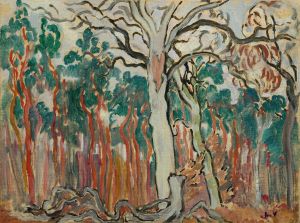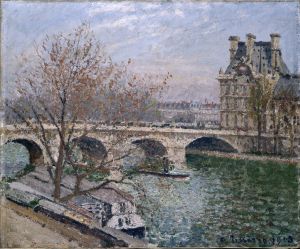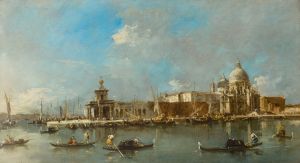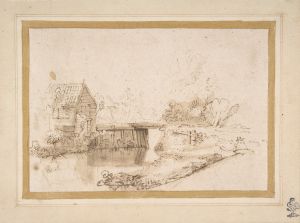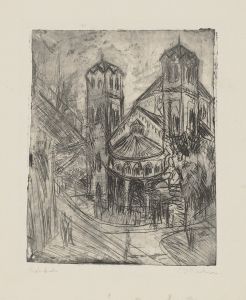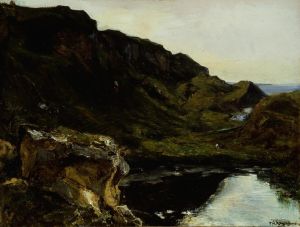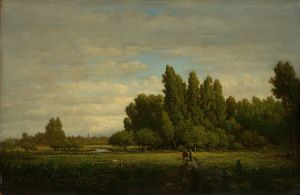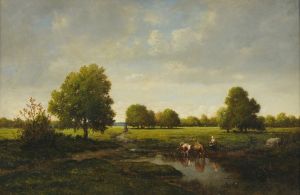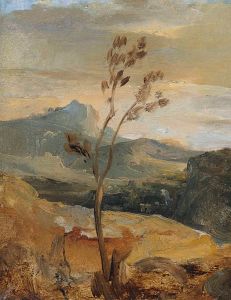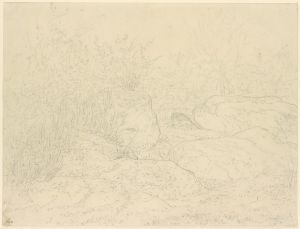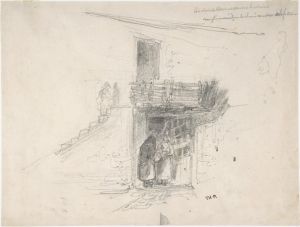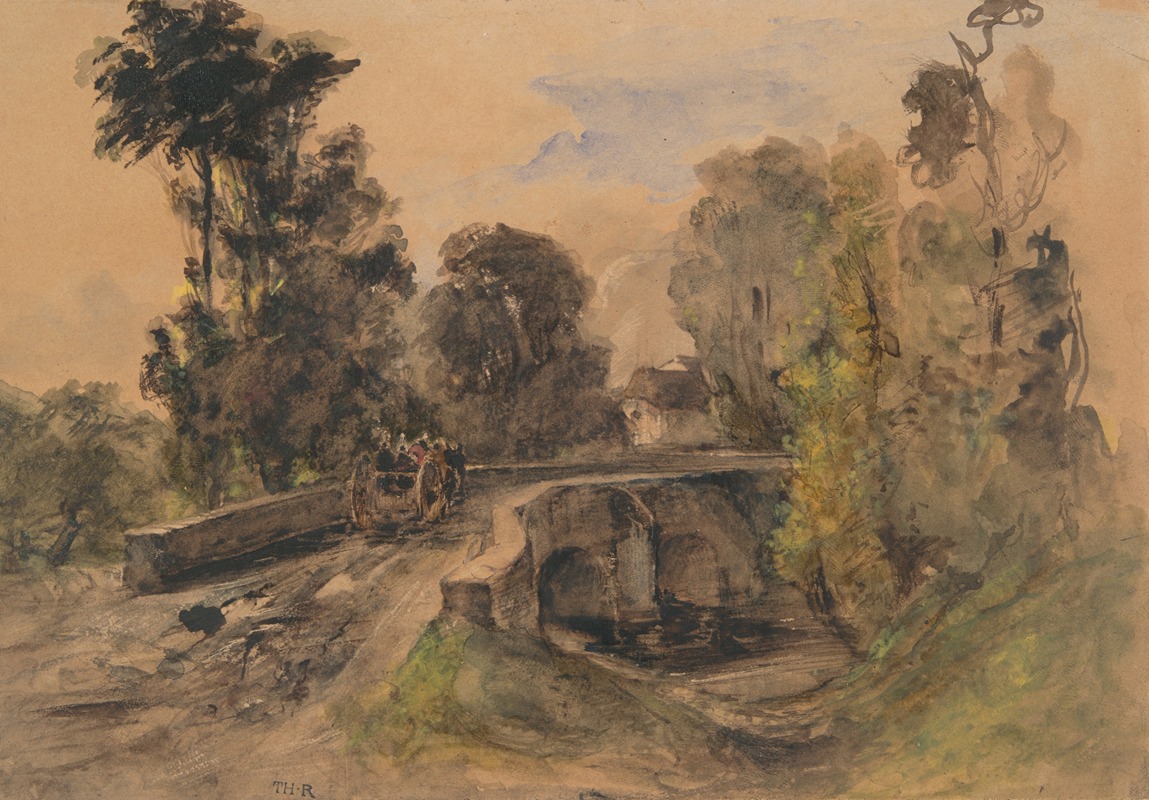
The Stone Bridge
A hand-painted replica of Théodore Rousseau’s masterpiece The Stone Bridge, meticulously crafted by professional artists to capture the true essence of the original. Each piece is created with museum-quality canvas and rare mineral pigments, carefully painted by experienced artists with delicate brushstrokes and rich, layered colors to perfectly recreate the texture of the original artwork. Unlike machine-printed reproductions, this hand-painted version brings the painting to life, infused with the artist’s emotions and skill in every stroke. Whether for personal collection or home decoration, it instantly elevates the artistic atmosphere of any space.
Théodore Rousseau's painting The Stone Bridge is a work attributed to the French artist who was a prominent figure in the Barbizon School, a movement that emphasized naturalistic landscapes and scenes of rural life. Rousseau, born in 1812 and active until his death in 1867, was known for his dedication to capturing the beauty and atmosphere of the French countryside, often working en plein air to achieve a sense of immediacy and authenticity in his works.
While specific details about The Stone Bridge are scarce, it is consistent with Rousseau's broader body of work, which frequently depicted serene landscapes featuring forests, rivers, and rural architecture. His paintings often reflect a deep sensitivity to light, texture, and the interplay of natural elements, showcasing his technical skill and emotional connection to the natural world. Rousseau's works are characterized by their rich, earthy tones and meticulous attention to detail, which evoke a sense of timelessness and tranquility.
Rousseau was a central figure in the Barbizon School, named after the village of Barbizon near the Forest of Fontainebleau, where he and other artists, such as Jean-François Millet, gathered to paint directly from nature. This movement was a precursor to Impressionism and marked a departure from the highly stylized and idealized landscapes of earlier academic traditions. Instead, Rousseau and his contemporaries sought to depict the natural world as they observed it, often focusing on the quiet beauty of everyday scenes.
As with many of Rousseau's works, The Stone Bridge likely reflects his commitment to portraying the harmony between human-made structures and the surrounding environment. Bridges, in particular, were a recurring motif in 19th-century landscape painting, symbolizing connection and the blending of nature and human ingenuity. However, without more specific historical documentation or analysis, further details about the painting's creation, location, or significance remain unknown.
Théodore Rousseau's contributions to art were widely recognized during his lifetime, and his works continue to be celebrated for their influence on the development of modern landscape painting. Today, his paintings are held in major collections around the world, including the Louvre in Paris and the Metropolitan Museum of Art in New York, though the current location or ownership of The Stone Bridge is not definitively documented.
This brief overview reflects the available information about The Stone Bridge and its context within Rousseau's oeuvre. Further research or discovery of archival materials may provide additional insights into this specific work.






